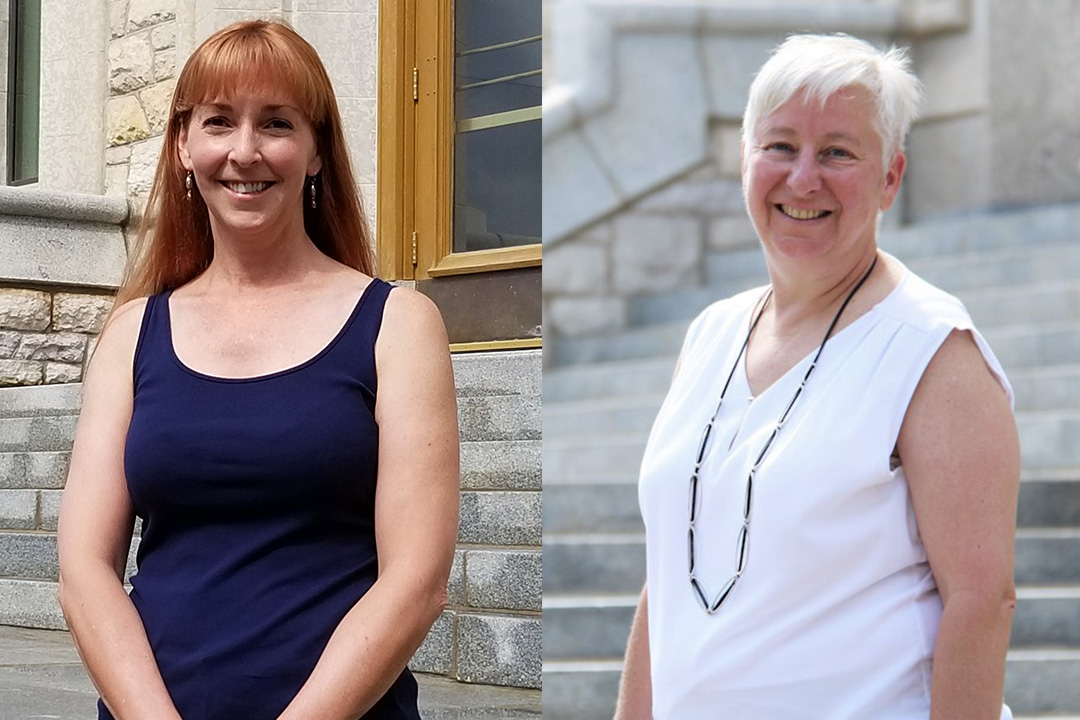
USask researchers explore therapeutics to fight COVID-19
With COVID-19 ravaging the globe, the race is on to accelerate therapeutics research and find effective treatment options.
By Amanda Woroniuk
Suppressing the coronavirus: Joyce Wilson leads the hunt for existing drugs that stop COVID-19.
"Like water-wings:" how Kerry Lavender gave mice human lungs. Listen to more episodes of Researchers Under the Scope. Also available on Apple Podcasts and Spotify.
Two research teams in the College of Medicine at the University of Saskatchewan (USask) are hoping their work will do just that.
Dr. Kerry Lavender (PhD) and Dr. Joyce Wilson (PhD) are principal investigators of projects that received Canadian Institutes of Health Research (CIHR) rapid response funding. The funding initiative contributes to the national research response to the COVID-19 pandemic.
Lavender’s project is rapidly evaluating some highly promising therapeutics against COVID-19, using a humanized mouse model.
“We normally make what we call a human immune system mouse. We do that all the time for our work with HIV,” said Lavender. “But with COVID-19 coming along, we needed to be able to study that virus and our normal model doesn’t support that. So on top of the human immune system, we now also give the mouse a little human lung transplant.”
By implanting human lung tissue into the mice, the team can study the effects of the virus and the human immune response to it inside of a mouse instead of patients.
Lavender said the team is focused on end-stage therapeutics that could get into a clinic quickly.
“We are trying to get things done as fast as possible,” said Lavender. “So we’re going to the end stage therapeutics—things that either have already shown great promise in a lab or things that have already been used in the clinic for other diseases. Since we know how it works, it could work for COVID-19 as well.”
Meanwhile, Wilson is leading a team investigating the repurposing of currently approved drugs to treat COVID-19. The team is working with collaborators Drs. Franco Vizeacoumar (PhD) and Darryl Falzarano (PhD) from the Vaccine and Infectious Disease Organization-International Vaccine Centre (VIDO-InterVac).
“When viruses infect a cell, they go in and hijack things. They don’t actually bring in a lot of their own machinery,” said Wilson. “The virus borrows cellular factors that are often disrupted in other diseases, including cancer. That suggests that there actually may be drugs out there that have been developed and possibly used in humans, that in addition to treating whatever they were designed to do, they may also inhibit this virus.”
Wilson’s lab will be making a reporter virus to screen the drugs. This process duplicates how the actual virus works, but without infectious particles.
“The reporter virus is a rapid screening tool to analyze drugs to see if they are inhibitors of the virus,” explained Wilson.
“We actually insert a gene and engineer the virus to not only express all the stuff the virus needs, but it also expresses a protein that we can measure really easily. We can then design a very rapid assay where we infect cells and can rapidly assess how that drug is affecting the virus.”
Once they figure out what the virus is using, the team will use a genetic tool known as a CRISPR screen to narrow down the list of potential drugs, which will be done by Vizeacoumar’s lab.
According to Wilson, this “combines virology with cancer research in a cool way.” When the team is ready to tests the drugs against the actual virus, they will work with Falzarano’s team.
Wilson appreciates the collaboration amongst USask researchers on COVID-19.
“I think it shows the strength of the research at the University of Saskatchewan these days, and the College of Medicine," said Wilson. "We have the skills that we can put together in fairly complex projects to solve problems that need to be solved.”
Article re-posted on .
View original article.
